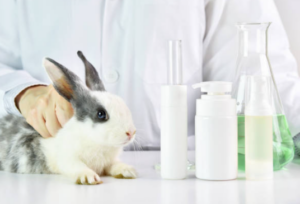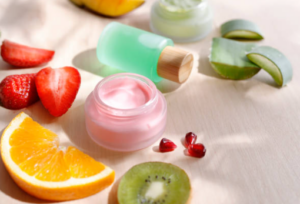From Lab to Shelf

The world of beauty is ever-evolving, with new products and trends constantly emerging. But one aspect of beauty that has garnered increasing attention and support is cruelty-free skincare and makeup. In this blog post, we will embark on a journey to trace the path of cruelty-free products from the lab to the shelf, exploring the ethical considerations, innovation, and consumer demand that have shaped this transformative movement.
The Birth of Cruelty-Free Beauty
The concept of cruelty-free beauty emerged in response to growing concerns about animal testing in the cosmetics industry. For decades, animals such as rabbits, mice, and guinea pigs were subjected to painful experiments to test the safety of various beauty products. However, as awareness of the ethical implications of such practices spread, consumers began demanding change.
Ethical Awakening
The concept of cruelty-free beauty was born out of a growing ethical awareness concerning animal welfare in the cosmetics industry. The mid-to-late 20th century witnessed a surge in activism and public awareness campaigns aimed at exposing the harsh reality of animal testing for cosmetics.
- 1970s: The Spark of Activism: The movement against animal testing in cosmetics can be traced back to the early 1970s when organizations like the American Fund for Alternatives to Animal Research (AFAAR) and the British Union for the Abolition of Vivisection (BUAV, now known as Cruelty Free International) were founded. These organizations played pivotal roles in raising awareness about the suffering animals endured in the name of beauty.
- 1980s: Grassroots Campaigns: The 1980s saw the emergence of grassroots campaigns against cosmetic animal testing. Activists started organizing demonstrations and collecting signatures for petitions, drawing public attention to the issue.
- 1980s-1990s: Legislative Initiatives: Public pressure led to legislative initiatives aimed at curbing animal testing in cosmetics. Some countries, including the United Kingdom, enacted partial bans on specific testing methods, while others considered broader legislation.
Legislative Action
The growing ethical awareness and activism eventually prompted governments around the world to take concrete steps to address the issue of animal testing in cosmetics.
- 1990s-2000s: European Union Ban: One of the most significant milestones was the European Union’s ban on animal testing for cosmetics, which was enacted in 2009. This ban not only prohibited the testing of finished cosmetic products on animals but also banned the testing of individual cosmetic ingredients.
- Global Progress: In the following years, countries like India, Israel, and Norway followed suit with their own bans on cosmetic animal testing, while others implemented stricter regulations regarding the sale of products tested on animals.
- International Alliances: International alliances and organizations, such as the International Cooperation on Cosmetics Regulation (ICCR), played a role in harmonizing regulations and fostering a global commitment to cruelty-free practices.
Shift in Public Perception
The shift towards cruelty-free beauty was not solely driven by activists and legislative changes; it was also influenced by a changing public perception of beauty and ethics.
- Media and Documentaries: Documentaries and media coverage, such as PETA’s “I’d Rather Go Naked Than Wear Fur” campaign and investigative reports on animal testing practices, brought the suffering of animals into the mainstream consciousness.
- Celebrity Endorsement: The support of celebrities and public figures, like Pamela Anderson and Ricky Gervais, who openly advocated for cruelty-free cosmetics, helped raise awareness and influence consumer choices.
- Consumer Demand: As consumers became more informed about the ethical implications of their purchasing decisions, there was a noticeable shift in demand towards cruelty-free products. Shoppers began actively seeking alternatives that aligned with their values.

The Lab: Innovations in Cruelty-Free Testing
Transitioning from animal testing to cruelty-free methods required a significant shift in how products are developed and tested. Advances in technology and research have played a pivotal role in creating alternative testing methods that ensure both safety and ethics.
In Vitro Testing
One of the most significant breakthroughs in cruelty-free beauty has been the development of in vitro testing, where scientists use human cells and tissues to test the safety and efficacy of products. This method not only avoids animal suffering but also provides more accurate results, as it uses human biology.
Artificial Skin Models
Artificial skin models, designed to mimic human skin, have become indispensable in the cosmetic industry. These models allow scientists to study how products interact with the skin without harming animals. They provide a realistic alternative for testing product safety and effectiveness.
Computer Simulation
Advancements in computer modeling have also transformed the way products are tested. Scientists can now simulate the effects of cosmetic products on human skin through computer algorithms, reducing the need for physical testing.

The Formulation: Cruelty-Free Ingredients
Cruelty-free beauty isn’t just about eliminating animal testing; it also involves using ingredients that are ethically sourced and don’t harm animals. Many cruelty-free brands take extra steps to ensure their formulations align with their values.
Plant-Based Ingredients
Cruelty-free brands often prioritize plant-based ingredients in their formulations. These ingredients are not only gentle on the skin but also sustainable and cruelty-free. Examples include aloe vera, chamomile, and green tea extracts.
Ethical Sourcing
Cruelty-free brands pay close attention to the ethical sourcing of their ingredients. This means ensuring that the production of ingredients doesn’t harm wildlife or ecosystems and that fair labor practices are upheld in the sourcing process.
Transparency
Transparency is a key principle of cruelty-free brands. They strive to provide consumers with clear information about their ingredients, sourcing practices, and testing methods. Many brands are now certified by organizations like Leaping Bunny and PETA to validate their cruelty-free status.
Cruelty-free brands often go through a rigorous process to obtain certifications that verify their commitment to ethical practices. These certifications provide consumers with confidence that the products they are purchasing align with their values.
Leaping Bunny
The Leaping Bunny certification is one of the most recognized symbols of cruelty-free beauty. To earn this certification, a brand must adhere to strict criteria, including a commitment to not testing on animals at any stage of product development.
PETA’s Beauty Without Bunnies Program
PETA’s Beauty Without Bunnies program is another widely recognized certification. Brands that receive this certification pledge not to conduct or commission animal testing on their products.
Choose Cruelty-Free
The Choose Cruelty-Free (CCF) certification is prominent in Australia and signifies that a brand is committed to being cruelty-free and free from animal-derived ingredients.

The Market: Growing Demand
Consumer preferences have evolved significantly, with more people than ever opting for cruelty-free products. This shift in demand has reshaped the beauty market, compelling both established and emerging brands to embrace cruelty-free practices.
The Millennial Influence
Millennials have been at the forefront of the cruelty-free movement. Their values often prioritize ethical considerations, and they are willing to invest in brands that share their beliefs. This demographic’s buying power has driven the demand for cruelty-free beauty products.
Social Media and Information Sharing
The rise of social media has enabled consumers to share information and experiences with cruelty-free products more easily. Beauty influencers and bloggers often highlight their favorite cruelty-free brands, further driving consumer awareness and demand.
Mainstream Retailers Embrace Cruelty-Free
Major retailers have recognized the growing demand for cruelty-free products and are stocking their shelves with these options. This shift has made cruelty-free beauty products more accessible to a broader audience.
Cruelty-free beauty brands come in all shapes and sizes, offering a wide range of products to cater to diverse preferences and needs. Let’s explore some notable cruelty-free brands and their contributions to the beauty market.
Tarte Cosmetics
Tarte Cosmetics is a well-known cruelty-free brand that offers an extensive range of makeup and skincare products. They are committed to using high-performance naturals™ and are certified by both PETA and Leaping Bunny.
Too Faced
Too Faced is a cruelty-free brand that has gained a devoted following for its playful and colorful makeup products. They proudly display the Leaping Bunny certification on their packaging.
Fenty Beauty by Rihanna
Fenty Beauty by Rihanna made waves not only for its inclusive shade range but also for being cruelty-free. Rihanna’s commitment to ethical beauty practices set a powerful example in the industry.
Pacifica Beauty
Pacifica Beauty is a vegan and cruelty-free brand known for its skincare, makeup, and fragrance products. They are certified by PETA and offer a range of clean and sustainable options.
Drunk Elephant
Drunk Elephant is a cruelty-free skincare brand that has gained a cult following for its commitment to using only safe and effective ingredients. They avoid the “Suspicious Six” ingredients known to be harmful or sensitizing.
The journey of cruelty-free products from lab to shelf has been marked by tremendous progress, ethical awareness, and consumer-driven change. But what does the future hold for cruelty-free beauty?
Continued Innovation
As technology and scientific research continue to advance, we can expect even more innovative cruelty-free testing methods to emerge. These methods will not only ensure product safety but also provide more accurate and reliable results.
Global Adoption
Cruelty-free beauty is not limited to specific regions or markets. We can anticipate more countries around the world adopting regulations and bans on animal testing for cosmetics. This will further cement cruelty-free practices as the industry standard.
Sustainability and Clean Beauty
Cruelty-free beauty is often closely associated with clean and sustainable beauty. As consumers become more eco-conscious, we can expect cruelty-free brands to prioritize sustainable packaging, ingredient sourcing, and production methods.
Consumer Empowerment
Consumers will continue to play a pivotal role in shaping the beauty industry. As more individuals prioritize ethical considerations in their purchasing decisions, brands will be compelled to embrace cruelty-free practices or risk losing their market share.
The journey of cruelty-free products from lab to shelf is a remarkable testament to the power of ethical awareness, innovation, and consumer demand. As the beauty industry continues to evolve, cruelty-free practices are no longer a niche choice but a fundamental aspect of the market. Whether you’re an advocate for animal rights or simply seeking effective and ethical beauty solutions, the cruelty-free beauty movement offers a path to a more compassionate and beautiful future.




